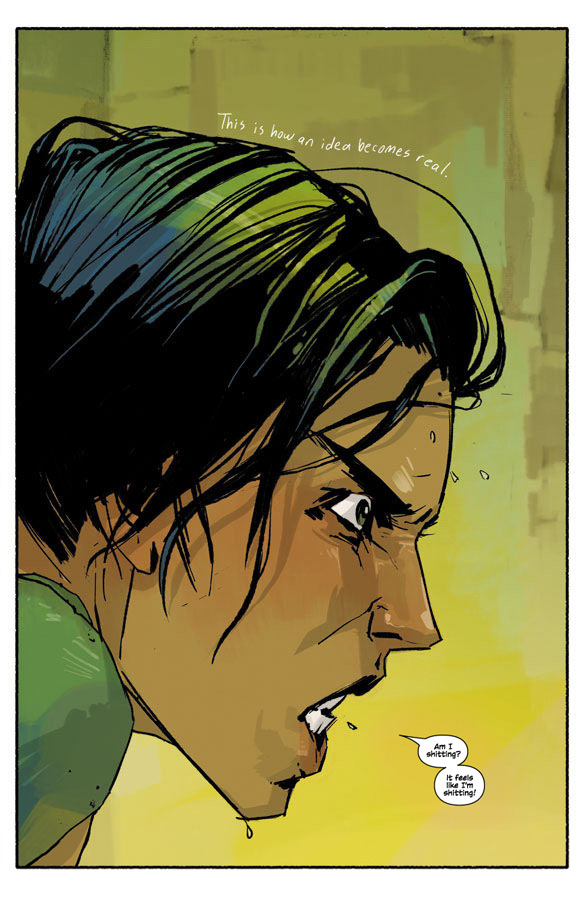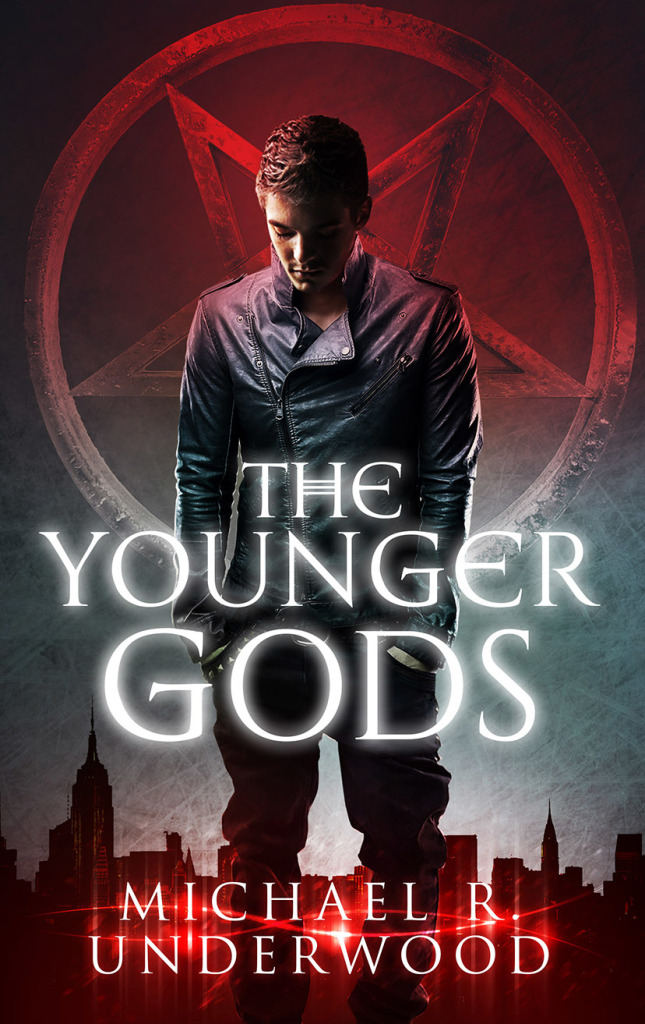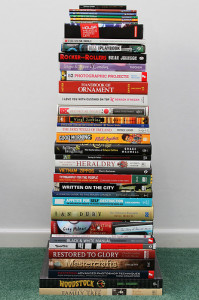I’ve been floored by the positive response so far. This is a very personal essay, and I’m glad that it’s resonating with others.
Baltimore Book Festival
This weekend is the Baltimore Book Festival! Normally held in the Historic Mt. Vernon district, this year the festival is happening in Baltimore’s Inner Harbor, which should lead to even more foot traffic, assuming the weather holds.
I’ll be participating in events over the weekend, mostly at the SFWA tent. Here’s my schedule!
Saturday, September 27th
12PM-2PM — Dangerous Voices Variety Hour with Marissa Meyer and Charles Gannon
The Dangerous Voices Variety Hour takes its cues from NPR’s “Wait, Wait Don’T Tell Me” quiz show and Orson Welles’ original War of the Worlds broadcast. It features readings, trivia, great prizes, irreverent author interviews, and more fun than you thought you could have at a reading.”
Participants: Marissa Meyer and Charles Gannon. Co-hosted by Sarah Pinsker and Michael Underwood.
4PM-5PM — How can I get my writing noticed? A Must-Do Panel for Writers in the Modern Age
You’ve finished a story or book and now you’d like to get it published and start buzz about your work. But in this modern age, the avenues for publication and promotion are dizzying, and they often tangle together. What are your options? What will bring you the most word of mouth? The most reviews? The best pay? Should you go it alone or seek a major publisher? Come talk with publishers, editors, con organizers, and reviewers about your options.
Panelists: Scott Edelman, Elektra Hammond, Don Sakers, Peggy Rae Sapienza, Mike Underwood, Jean Marie Ward
Sunday September 28th
12 PM — Jeff VanderMeer — The Southern Reach Trilogy
I’ll be introducing Jeff VanderMeer as he speaks on the Ivy Bookshop stage.
Amazon Crowd-Sourced Publishing
According to multiple sources, Amazon is preparing to launch a crowd-sourced, almost reality-TV-style publishing program, where authors upload unpublished MSS and those that receive the most votes get considered for Amazon Publication (by the genre/category-specific imprints, or by a new imprint, I wonder?) with fairly generous terms.
Sources:
https://kdp.amazon.com/community/thread.jspa?threadID=207604&start=0&tstart=0
Thoughts? We’re in early days yet, but this looks to me like a feeder program for Amazon Publishing.
From Page to Panel, Part One
A couple of weeks back, I attended my first Baltimore Comic-Con. It clocked in at around 15,000 people, and unlike the bigger Comic-Cons (NYCC or PHXCC) that I’ve attended, Baltimore was still very much focused on comics.
After two days of panels, browsing, meeting creators, and loading my bags down with glorious comics goodness, I should have expected this to happen.
Sometime during the weekend, I was bitten by a radioactive comics bug. It re-awakened my often-deferred interest in writing for the form.
I grew up reading comics, taking the change from our recycling deposits down to the friendly local comic shop in Brooklyn to buy the latest issue of Spider-Man, Batman, or X-Men. I’ve tried my hand at writing comics scripts only a little bit, but often thought about what it’d take to move into that form.
Now, let me be clear that I have no intentions of leaving prose writing. That’s my home base, and I’m not likely to ever stop writing prose. But more and more, I see writers crossing formats, including several of my writing idols (Neil Gaiman, China Mieville, Greg Rucka, among others).
Therefore, the last couple of weeks, I’ve been devouring comics, deepening my immersion in the form, investigating what’s going on at the top of the form with the works that are making waves and pushing at the edges of what the form can and is doing.
Here’s a representative sample of my research list:
- Saga (Brian K. Vaughn and Fiona Staples)
- The Wicked + the Divine (Kieron Gillen and Jamie McKelvie)
- Batwoman (JH Williams III and W. Haden Blackman)
- Lumberjanes (Grace Ellis, Noelle Stevenson, and Brooke Allen)
- Gotham Central (Ed Brubaker, Greg Rucka, and Michael Lark)
- Rat Queens (Kurtis J. Wiebe and Roc Upchurch)
- Ms. Marvel (G. Willow Wilson and Adrian Alphona
- Velvet (Ed Brubaker and Steve Epting)
- Lazarus (Greg Rucka and Michael Lark)
- Global Frequency (Warren Ellis and various artists)
- Chew (John Layman and Rob Guillory)
- Atomic Robo (Brian Clevinger and Scott Wegener)
I’ve also been diving into some craft books, and revisiting some others I’ve already read:
- Words for Pictures – Brian Michael Bendis
- Writing for Comics and Graphic Novels – Peter David
- Understanding Comics – Scott McCloud
- Making Comics – Scott McCloud
- Save the Cat – Blake Snyder
Lessons learned so far
Transcribe
One of the best things I did in trying to deepen my understanding of the differences between writing prose and writing for comics was to open my copy of Saga Vol. 1 and transcribe the finished comic back into a script, trying to capture the visuals, emotion, and to see how much text fit on the page.

Saga, Issue #1 page 1. From Image Comics. (C) Brian K. Vaughn and Fiona Staples
Script != Finished Page != Script
The biggest challenge I’ve faced so far coming to comics writing is that the finished product is drastically different from the working document that a comics writer will produce. When learning prose writing, you can look at a piece of fiction and see the final draft as the actual product. But in comics, there’s so much of a collaboration and melding of the styles and skills of several creators (sometimes as many as six: writer, penciler, inker, colorist, letterer, editor, graphic designer) that a writer’s script is only one part of the equation. For me, that makes it harder to tease out where my part is, especially writing without having yet found any collaborators. I want to write some scripts and see how well my novelist chops translate before trying to make finished comics, and then start reaching out when I’m confident that I’ve learned the comics form well enough to start making professional works.
Basically, It’s Writer Multi-Classing
I’ve written seven novels (two of which are trunked, never to be seen again), and a long novella, as well as a couple dozen short stories. In D&D terms, I’m somewhere in the 3-5th level in terms of my Prose Writer class. But this, this is taking a new class – Comics Writer. There are different skills, different class abilities, and a whole power tree of collaboration powers for when you’re in a party with other comics creators. So while my overall Writer level combines my Prose Writer and Comics Writer levels (like a Wizard taking a level of a prestige class), my Comics Writer level is still 1 right now, so there’s a weird feeling of starting over, of going back to square one. I know a lot about storytelling, but the format, the medium is very different, and I’m having to learn to adjust to it, just like I adjusted from storytelling in RPGs to storytelling in prose.
Choosing Your Moment
Since the comics form is one where moments (panels) are compressed into a fluid narrative experience by the reader, one of the most important tasks for a creator is to chose your moments, to pick which snapshot in the action to depict in a panel, as well as how to space out your moments – several panels showing moments very close together, or jumping farther in time between panels. This is not unlike the task of scene selection in prose writing, or picking where to dramatize within a scene, but it’s very much its own thing in comics.
The Business End
I work in SF/F prose publishing. I’ve been learning about the trade publishing industry, and SF/F prose publishing in specific, for around a decade. It has certain processes, customs, and paths to publication.
Comics, unsurprisingly, is different. I’ve asked questions about submission and breaking in to creators and publisher staffers at the various comic-cons I’ve attended, and I’ve received incredibly divergent answers.
Here’s how to break in, as I’ve been told:
- Self-publish your own works and the editors will find you.
- Send everything you make to the editors you want to work with.
- Pay an artist to do a whole graphic novel and then try to sell it to publishers.
- Pitch editors with ideas and then they’ll ask for scripts. Then they’ll find you an artist.
- Submit a complete 8-page comic.
- Submit a full 22-page comic.
- Self-publish for a while and then try to pitch a new project to publishers.
- Look for comics anthology invites and start there.
As you might be able to tell, that’s a fair range. The fact that I have several novels out from traditional publishers changes the game for me somewhat, but it doesn’t give me one clear path to publication. In prose publishing, you can query agents, who then pitch to editors. There are other paths as well, but this is the ‘standard’ path. Comics doesn’t seem to have as clear a ‘standard’ path to publication. (Note that the standard path in prose publishing is often anything but easy. But it is the default, one that takes an unpublished debut work and then gets it sold to a publisher).
As you’ll note, this post says ‘Part One.’ I’ll keep talking about my experiences moving into comics writing, both to remember what the process was like, and to (hopefully) cast some light on the journey for other writers interested in moving into comics, either from a prose background or not.
The Younger Gods cover
It’s here! Yesterday, the fine folks at My Bookish Ways revealed the cover for my new paranormal thriller, THE YOUNGER GODS.
And here it is in all of its glory:
THE YOUNGER GODS will be published by Pocket Star on all ebook platforms this October 13th. You can find pre-order links here.
Remembering Graham Joyce
Today I remember Graham Joyce, one of my teachers at Clarion West, who passed away this afternoon after a long battle with cancer.
Graham was the instructor the week we critiqued the original short story version of “Shield and Crocus.” Graham encouraged me to go and write the story as a novel. He also taught me about dialogue and about how to break apart revision tasks in a way that made it seem doable.
He was with us for the third week of the workshop, when nearly all of us were locked into a somber routine of spending all of our time writing and critiquing. Graham gathered us up and took us out to the pub – he took us out pretty much every day that week, leading by example to show us how to build community as writers, how to balance work and play, to enjoy ourselves after putting a hard day’s work.
I got to see Graham last fall at World Fantasy in Brighton, along with several of my Clarion West classmates. As ever, Graham was warm, smart, and supportive, giving generously of his time to catch up with us.
Graham brought great work into this world, and his warmth and insights moved many in the community. He will be remembered.
If you’re not familiar with Graham’s work, I’d recommend The Tooth Fairy, which I read before heading to Clarion West. You might also try his recent The Year of the Ladybird.
Thinking Academically about Genre
At this year’s ReaderCon, I was chatting with a couple of friends and colleagues about the need for fantasy/sf books at different levels, from 100 level all the way up to graduate level (500-700), applying a US University curriculum numbering gloss. That got a positive response, and so I expanded it into a short essay, which went up on Tor.com and sparked a good amount of chatter.
If you haven’t done so yet, here’s the link to the essay. Since there’s been quite a response, I think I’ll be expanding it further, so stay tuned.
LonCon schedule

Hi folks,
I hope to see many of you at LonCon 3 this week, where I’ll be supporting participating in panels, Angry Robot Authors, and having my first ever Literary Beer event at a very British hour of 11 AM. Expect publishing gossip, geekery, and/or marketing secrets.
On Wednesday at 6PM, I’ll be at Forbidden Planet for the Angry Robot/Titan event.
My LonCon schedule:
Thursday
Tolkien Society Presents: The Unpayable Debt?
18:00 – 19:00, Capital Suite 13 (ExCeL)
Friday
Diversity in Comic Books: The Good, The Bad, and the Missing
12:00 – 13:30, Capital Suite 8 (ExCeL)
Cities: Where, Who, Why? (Moderating)
18:00 – 19:00, Capital Suite 10 (ExCeL)
Saturday
Literary Beer
11:00 – 12:00, The Bar (ExCeL)
Autographing 1 – Michael R. Underwood
15:00 – 16:30, Autographing Space (ExCeL)
Sunday
The Fantastic Now
13:30 – 15:00, Capital Suite 16 (ExCeL)
I’ll also be attending the Hugo Awards as a part of the Skiffy and Fanty Show, nominated for Best Fancast! I will treasure my rocket pin for all time.
All signs are pointing toward a huge, exciting convention, and I look forward to seeing many of you there!
The Daily Deal!
Shield and Crocus is the SFF Kindle Daily Deal today, on sale for just $1.99.
This means if you’ve been meaning to buy the book and haven’t gotten around to it, today’s your day to take the plunge.
And if you’ve already bought the book, and loved it, this is a great chance to buy a copy to send to a friend who you think would enjoy it </subtle>
The KDD is a big deal in the ebook sales world, so I’d love any signal-boosting folks could give. I’ve prepared a ready-made tweet for you to ease the process:
Monsters, heroes, and a city built in the bones of a titan – SHIELD AND CROCUS, a Kindle Daily Deal for just $1.99 http://amzn.to/1v16jVZ
Newsletter drive
Hi folks,
I’m working on beefing up my newsletter as a way to reach out to readers directly, good marketing strategy and all.
As an incentive, I’m going to release the original short story version of “Shield and Crocus” written at Clarion West in 2007 to my newsletter when I hit 50 subscribers. And if we hit 50 before the end of August, I’ll do a subscribers-only giveaway of a Cool Prize.



